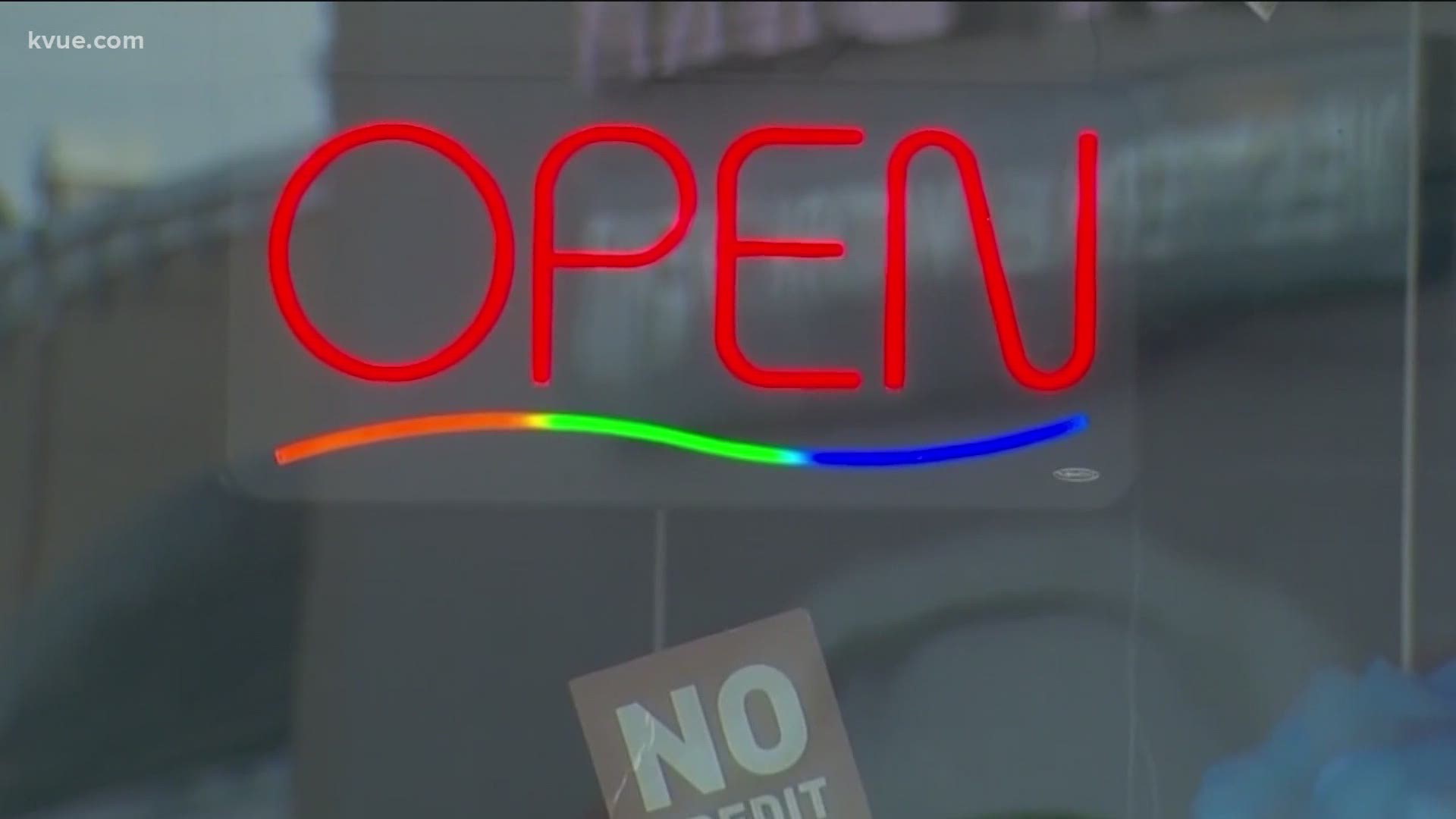AUSTIN, Texas — When Kelvin Liao took over a quaint bakery in West Austin three years ago, he pictured a room full of people munching on pastries and sipping coffee, not the future that lied ahead. No business owner in the country did.
When the coronavirus struck the world, including here in our own backyards, business owners were blindsided and had to do some quick thinking to try and save their businesses.
"We did what we could back in April and May. I push a lot of online orders," Liao said.
Russell's Bakery & Coffee Bar, which Liao owns, was one of the many businesses that had to adapt. As Austin-Travis County sits on the verge of a Stage 5 response to the coronavirus, he said he is more prepared this time.
Austin health officials have not decided if they will declare Stage 5, but if they do, the guidelines recommend only essential businesses stay open.
RELATED: What would entering Stage 5 mean?
To be clear, Gov. Greg Abbott has stated multiple times he does not plan to shut down any more businesses, but more scaling back is possible if people do not follow the rules. City officials cannot override his decisions.
Elizabeth Dixie Patrick, interim executive director of the Austin Independent Business Alliance (AIBA), said it is OK for business owners to remain optimistic that none of this will happen, but that does not mean they should sit idle either.
"Having a plan plays into that optimism. We know we are going to be some booming business in the near future if we are not already," Patrick said. "What are the steps we are going to take between where we are now and where we want to be later? That is what the planning is about."
When it comes to having a contingency plan, or a "plan B," she said knowledge and communication are important.
Owners should thoroughly understand their policy for leave, teleworking and compensation, and then communicate those policies to their employees so there is no confusion.
Next, pinpoint the essential parts of the business that will keep it running and focus on those. Finally, come up with ways to pivot the business model to accommodate closed doors.
"If I am doing one thing, and that virus is not allowing us to do that one thing right now, how can I pivot my business model to do something slightly different to still keep the cash flow coming in?" Patrick said.
RELATED:
When the coronavirus first hit, Liao's business revenue dropped to 30%, an unsustainable level, he said. He started maneuvering his business to easily accessible online ordering and said his efforts, along with the reopening, has gotten him back up to 50%.
He also received a Personal Protection Program (PPP) loan, which has helped him maintain operations.
Other businesses KVUE reached out to said they were promoting their business online and on social media more. Patrick said that is the right way to go.
"Equally huge is communication with your customers so that they know, first of all, if you are able to stay open, and [if you are staying open] communicating with them, here are the steps we are taking to keep you safe," Patrick said.
Liao is trying to think outside the box for his business, including possibly partnering with neighboring shops to create a promotion. However, he said part of his plan includes taking steps now to prevent any future closures, so he kept the bakery closed for dine-in services.
This protects him and his employees from getting the virus, which would force him to close for at least two weeks, leaving him in a worse financial situation.
While all of these things are important to remember, Patrick said it is so important that customers follow the guidelines set in place by the city and state so local businesses can remain open as they ride the waves of the coronavirus.
"The businesses we support right now are the ones that are going to be around when the pandemic is over," she said. "If these are the businesses that make your day to day lives interesting and fun and you love, you need to spend the money you do have right now, with those places."
PEOPLE ARE ALSO READING:

